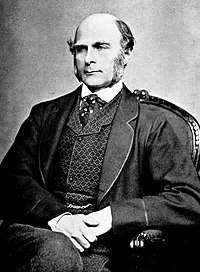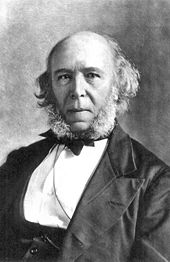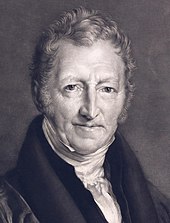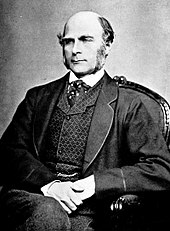From Wikipedia, the free encyclopedia

Logo from the Second International Eugenics Conference, 1921, depicting eugenics as a tree which unites a variety of different fields.[1]
Eugenics (/juːˈdʒɛnɪks/; from Greek εὐγενής eugenes "well-born" from εὖ eu, "good, well" and γένος genos, "race, stock, kin")[2][3] is the belief and practice which aims at improving the genetic quality of the human population.[4][5] It is a social philosophy advocating the improvement of human genetic traits through the promotion of higher reproduction of people with desired traits (positive eugenics), and reduced reproduction of people with less-desired or undesired traits (negative eugenics).[6]
While eugenic principles have been practiced as far back in world history as Ancient Greece, the modern history of eugenics began in the early 20th century when a popular eugenics movement emerged in many countries, including the US and most European countries. In this period eugenic ideas were espoused across the political spectrum. Consequently, many countries adopted eugenic policies meant to improve the genetic stock of their countries. Such programs often included both "positive" measures, such as encouraging individuals deemed particularly "fit" to reproduce, and "negative" measures such as marriage prohibitions and forced sterilization of people deemed unfit for reproduction. People deemed unfit to reproduce often included people with mental or physical disabilities, people who scored in the low ranges of different IQ tests, criminals and deviants, and members of disfavored minority groups. The eugenics movement reached a climax in Nazi Germany where a state policy of racial hygiene based on eugenic principles led to the Holocaust and the murder by the German state of at least 10 million people. In the decades following World War II, with the institution of human rights, many countries gradually abandoned eugenics policies, although some Western countries, among them Sweden and the US, continued to carry out forced sterilizations for several decades. Today eugenics as a state policy is practiced in China, where it is also criticized by international organizations. Without being part of systematic eugenics policies, elements of eugenic practice exist in many societies ranging from state policies encouraging safe sex or offering rewards for procreation or offering fetal genetic screenings, counseling or abortions, to private companies or individuals offering rewards for sterilization or abortion for members of certain groups.
The main critique towards eugenics policies is that regardless of whether "negative" or "positive" policies are used, they are vulnerable to political abuse because the criteria of selection are determined by whichever group is in power. Furthermore, negative eugenics in particular is considered by many to be a violation of basic human rights, which include the right to reproduction.
History

Francis Galton was an early eugenicist, coining the term itself and popularizing the collocation of the words "nature and nurture".[7]
However, the term "eugenics" to describe the modern concept of improving the quality of human beings born into the world was originally developed by Francis Galton. Galton had read his half-cousin Charles Darwin's theory of evolution, which sought to explain the development of plant and animal species, and desired to apply it to humans. Galton believed that desirable traits were hereditary based on biographical studies.[11] In 1883, one year after Darwin's death, Galton gave his research a name: eugenics.[12] Throughout its recent history, eugenics has remained a controversial concept.[13]
Eugenics became an academic discipline at many colleges and universities, and received funding from many sources.[14] Three International Eugenics Conferences presented a global venue for eugenists with meetings in 1912 in London, and in 1921 and 1932 in New York. Eugenic policies were first implemented in the early 1900s in the United States.[15] It has roots in France, Germany, Great Britain, and the United States.[16] Later, in the 1920s and 30s, the eugenic policy of sterilizing certain mental patients was implemented in other countries, including Belgium,[17] Brazil,[18] Canada,[19] Japan, and Sweden.[20]
The scientific reputation of eugenics started to decline in the 1930s, a time when Ernst Rüdin used eugenics as a justification for the racial policies of Nazi Germany. Nevertheless, in Sweden the eugenics program continued until 1975.[20] In addition to being practised in a number of countries, eugenics was internationally organized through the International Federation of Eugenics Organizations.[21] Its scientific aspects were carried on through research bodies such as the Kaiser Wilhelm Institute of Anthropology, Human Heredity, and Eugenics,[22] the Cold Spring Harbour Carnegie Institution for Experimental Evolution,[23] and the Eugenics Record Office.[24] Its political aspects involved advocating laws allowing the pursuit of eugenic objectives, such as sterilization laws.[25] Its moral aspects included rejection of the doctrine that all human beings are born equal, and redefining morality purely in terms of genetic fitness.[26] Its racist elements included pursuit of a pure "Nordic race" or "Aryan" genetic pool and the eventual elimination of "less fit" races.[27][28]
As a social movement, eugenics reached its greatest popularity in the early decades of the 20th century. At this point in time, eugenics was practiced around the world and was promoted by governments and influential individuals and institutions. Many countries enacted[29] various eugenics policies and programmes, including: genetic screening, birth control, promoting differential birth rates, marriage restrictions, segregation (both racial segregation and segregation of the mentally ill from the rest of the population), compulsory sterilization, forced abortions or forced pregnancies, and genocide. Most of these policies were later regarded as coercive or restrictive, and now few jurisdictions implement policies that are explicitly labelled as eugenic or unequivocally eugenic in substance. The methods of implementing eugenics varied by country; however, some early 20th century methods involved identifying and classifying individuals and their families, including the poor, mentally ill, blind, deaf, developmentally disabled, promiscuous women, homosexuals, and racial groups (such as the Roma and Jews in Nazi Germany) as "degenerate" or "unfit", the segregation or institutionalization of such individuals and groups, their sterilization, euthanasia, and their mass murder.[30] The practice of euthanasia was carried out on hospital patients in the Aktion T4 centers such as Hartheim Castle.

A Lebensborn birth house in Nazi Germany. Created with intention of raising the birth rate of "Aryan" children from extramarital relations of "racially pure and healthy" parents.
By the end of World War II, many of the discriminatory eugenics laws were largely abandoned, having become associated with Nazi Germany.[30][31] After World War II, the practice of "imposing measures intended to prevent births within [a population] group" fell within the definition of the new international crime of genocide, set out in the Convention on the Prevention and Punishment of the Crime of Genocide.[32] The Charter of Fundamental Rights of the European Union also proclaims "the prohibition of eugenic practices, in particular those aiming at selection of persons".[33] In spite of the decline in discriminatory eugenics laws, government practices of compulsive sterilization continued into the 21st century. During the ten years President Alberto Fujimori led Peru from 1990 to 2000, allegedly 2,000 persons were involuntarily sterilized.[34] China maintains its forcible one-child policy as well as a suite of other eugenics based legislation in order to reduce population size and manage fertility rates of different populations.[35][36][37] In 2007 the United Nations reported forcible sterilisations and hysterectomies in Uzbekistan.[38] During the years 2005–06 to 2012–13, nearly one-third of the 144 California prison inmates who were sterilized did not give lawful consent to the operation.[39]
Developments in genetic, genomic, and reproductive technologies at the end of the 20th century are raising numerous questions regarding the ethical status of eugenics, effectively creating a resurgence of interest in the subject. Some, such as UC Berkeley sociologist Troy Duster, claim that modern genetics is a back door to eugenics.[40] This view is shared by White House Assistant Director for Forensic Sciences, Tania Simoncelli, who stated in a 2003 publication by the Population and Development Program at Hampshire College that advances in pre-implantation genetic diagnosis (PGD) are moving society to a "new era of eugenics", and that, unlike the Nazi eugenics, modern eugenics is consumer driven and market based, "where children are increasingly regarded as made-to-order consumer products."[41] In a 2006 newspaper article, Richard Dawkins said that discussion was inhibited by the shadow of Nazi misuse, to the extent that some scientists would not admit that breeding humans for abilities was at all possible, but in his view this was not physically different from breeding domestic animals for traits such as speed or herding skill. He felt that enough time had elapsed to at least ask just what the ethical differences were between breeding for ability versus training athletes or forcing children to take music lessons, though he could think of persuasive reasons to draw the distinction.[42]
Some, such as Nathaniel C. Comfort from Johns Hopkins University, claim that the change from state-led reproductive-genetic decision-making to individual choice has moderated the worst abuses of eugenics by transferring the decision-making from the state to the patient and their family.[43] Comfort suggests that "[t]he eugenic impulse drives us to eliminate disease, live longer and healthier, with greater intelligence, and a better adjustment to the conditions of society; and the health benefits, the intellectual thrill and the profits of genetic bio-medicine are too great for us to do otherwise."[44] Others, such as bio-ethicist Stephen Wilkinson of Keele University and Honorary Research Fellow Eve Garrard at the University of Manchester, claim that some aspects of modern genetics can be classified as eugenics, but that this classification does not inherently make modern genetics immoral. In a co-authored publication by Keele University, they stated that "[e]ugenics doesn't seem always to be immoral, and so the fact that PGD, and other forms of selective reproduction, might sometimes technically be eugenic, isn't sufficient to show that they're wrong."[45]
Meanings and types
The modern field and term were first formulated by Francis Galton in 1883,[46] drawing on the recent work of his half-cousin Charles Darwin.[47][48] Galton published his observations and conclusions in his book Inquiries into Human Faculty and Its Development.
The origins of the concept began with certain interpretations of Mendelian inheritance, and the theories of August Weismann.[49] The word eugenics is derived from the Greek word eu ("good" or "well") and the suffix -genēs ("born"), and was coined by Galton in 1883 to replace the word "stirpiculture", which he had used previously but which had come to be mocked due to its perceived sexual overtones.[50] Galton defined eugenics as "the study of all agencies under human control which can improve or impair the racial quality of future generations".[51] Galton did not understand the mechanism of inheritance.[52]
Eugenics has, from the very beginning, meant many different things.[citation needed] Historically, the term has referred to everything from prenatal care for mothers to forced sterilization and euthanasia.[citation needed] To population geneticists, the term has included the avoidance of inbreeding without altering allele frequencies; for example, J. B. S. Haldane wrote that "the motor bus, by breaking up inbred village communities, was a powerful eugenic agent".[53] Debate as to what exactly counts as eugenics has continued to the present day.[54]
Edwin Black, journalist and author of War Against the Weak, claims eugenics is often deemed a pseudoscience because what is defined as a genetic improvement or a desired trait is often a cultural choice rather than a matter that can be determined through objective scientific inquiry.[55] The most disputed aspect of eugenics has been the definition of "improvement" of the human gene pool, such as what is a beneficial characteristic and what is a defect. This aspect of eugenics has historically been tainted with scientific racism.
Early eugenists were mostly concerned with perceived intelligence factors that often correlated strongly with social class. Some of these early eugenists include Karl Pearson and Walter Weldon, who worked on this at the University College London.[11]
Eugenics also had a place in medicine. In his lecture "Darwinism, Medical Progress and Eugenics", Karl Pearson said that everything concerning eugenics fell into the field of medicine. He basically placed the two words as equivalents. He was supported in part by the fact that Francis Galton, the father of eugenics, also had medical training.[56]
Eugenic policies have been conceptually divided into two categories. Positive eugenics is aimed at encouraging reproduction among the genetically advantaged; for example, the reproduction of the intelligent, the healthy, and the successful.[57] Possible approaches include financial and political stimuli, targeted demographic analyses, in vitro fertilization, egg transplants, and cloning.[58] The movie Gattaca provides a fictional example of positive eugenics done voluntarily. Negative eugenics aimed to eliminate, through sterilization or segregation, those deemed physically, mentally, or morally "undesirable".[57] This includes abortions, sterilization, and other methods of family planning.[58] Both positive and negative eugenics can be coercive; abortion for fit women, for example, was illegal in Nazi Germany.[59]
Jon Entine claims that eugenics simply means "good genes" and using it as synonym for genocide is an "all-too-common distortion of the social history of genetics policy in the United States." According to Entine, eugenics developed out of the Progressive Era and not "Hitler's twisted Final Solution."[60]
Implementation methods
According to Richard Lynn, eugenics may be divided into two main categories based on the ways in which the methods of eugenics can be applied.[61]- Classical Eugenics
- Negative eugenics by provision of information and services, i.e. reduction of unplanned pregnancies and births.[62]
- "Just say no" campaigns.[63]
- Sex education in schools.[64]
- School-based clinics.[65]
- Promoting the use of contraception.[66]
- Emergency contraception.[67]
- Research for better contraceptives.[68]
- Sterilization.[69]
- Abortion.[70]
- Negative eugenics by incentives, coercion and compulsion.[71]
- Incentives for sterilization.[72]
- The Denver Dollar-a-day program, i.e. paying teenage mothers for not becoming pregnant again.[73]
- Incentives for women on welfare to use contraceptions.[74]
- Payments for sterilization in developing countries.[75]
- Curtailment of benefits to welfare mothers.[76]
- Sterilization of the "mentally retarded".[77]
- Sterilization of female criminals.[78]
- Sterilization of male criminals.[79]
- Licences for parenthood.[80][81][82]
- Positive eugenics.[83]
- Financial incentives to have children.[84]
- Selective incentives for childbearing.[85]
- Taxation of the childless.[86]
- Ethical obligations of the elite.[87][clarification needed]
- Eugenic immigration.[88]
- Negative eugenics by provision of information and services, i.e. reduction of unplanned pregnancies and births.[62]
- New Eugenics
Arguments
Doubts on traits triggered by inheritance
The first major challenge to conventional eugenics based upon genetic inheritance was made in 1915 by Thomas Hunt Morgan, who demonstrated the event of genetic mutation occurring outside of inheritance involving the discovery of the hatching of a fruit fly (Drosophila melanogaster) with white eyes from a family of red-eyes.[96] Morgan claimed that this demonstrated that major genetic changes occurred outside of inheritance and that the concept of eugenics based upon genetic inheritance was not completely scientifically accurate.[96] Additionally, Morgan criticized the view that subjective traits, such as intelligence and criminality, were caused by heredity because he believed that the definitions of these traits varied and that accurate work in genetics could only be done when the traits being studied were accurately defined.[97] In spite of Morgan's public rejection of eugenics, much of his genetic research was absorbed by eugenics.[98][99]Ethics
A common criticism of eugenics is that "it inevitably leads to measures that are unethical".[100] Historically, if one minority group was considered less intelligent than another by the majority group, then it was more likely that the racial minority group was submitted to a eugenics program rather than the least intelligent members of the whole population. H. L. Kaye wrote of "the obvious truth that eugenics has been discredited by Hitler's crimes".[101] R. L. Hayman argued that "the eugenics movement is an anachronism, its political implications exposed by the Holocaust".[102]Losing genetic diversity by classifying traits as diseases
Eugenic policies could also lead to loss of genetic diversity, in which case a culturally accepted "improvement" of the gene pool could very likely—as evidenced in numerous instances in isolated island populations (e.g., the dodo, Raphus cucullatus, of Mauritius)—result in extinction due to increased vulnerability to disease, reduced ability to adapt to environmental change, and other factors both known and unknown. A long-term species-wide eugenics plan might lead to a scenario similar to this because the elimination of traits deemed undesirable would reduce genetic diversity by definition.[103]Edward M. Miller claims that, in any one generation, any realistic program should make only minor changes in a fraction of the gene pool, giving plenty of time to reverse direction if unintended consequences emerge, reducing the likelihood of the elimination of desirable genes.[104] Miller also argues that any appreciable reduction in diversity is so far in the future that little concern is needed for now.[104]
While the science of genetics has increasingly provided means by which certain characteristics and conditions can be identified and understood, given the complexity of human genetics, culture, and psychology there is at this point no agreed objective means of determining which traits might be ultimately desirable or undesirable. Some diseases such as sickle-cell disease and cystic fibrosis respectively confer immunity to malaria and resistance to cholera when a single copy of the recessive allele is contained within the genotype of the individual. Reducing the instance of sickle-cell disease in Africa where malaria is a common and deadly disease could indeed have extremely negative net consequences.
However, some genetic diseases such as haemochromatosis can increase susceptibility to illness, cause physical deformities, and other dysfunctions, which provides some incentive for people to re-consider some elements of eugenics.
Autistic people have advocated a shift in perception of autism spectrum disorders as complex syndromes rather than diseases that must be cured. Proponents of this view reject the notion that there is an "ideal" brain configuration and that any deviation from the norm is pathological; they promote tolerance for what they call neurodiversity.[105] Baron-Cohen argues that the genes for Asperger's combination of abilities have operated throughout recent human evolution and have made remarkable contributions to human history.[106] The possible reduction of autism rates through selection against the genetic predisposition to autism is a significant political issue in the autism rights movement, which claims that autism is a form of neurodiversity.
Heterozygous recessive traits
The heterozygote test is used for the early detection of recessive hereditary diseases, allowing for couples to determine if they are at risk of passing genetic defects to a future child.[107] The goal of the test is to estimate the likelihood of passing the hereditary disease to future descendants.[107]Recessive traits can be severely reduced, but never eliminated unless the complete genetic makeup of all members of the pool was known, as aforementioned. As only very few undesirable traits, such as Huntington's disease, are dominant, it could be argued[by whom?] from certain perspectives that the practicality of "eliminating" traits is quite low.[citation needed]
There are examples of eugenic acts that managed to lower the prevalence of recessive diseases, although not influencing the prevalence of heterozygote carriers of those diseases. The elevated prevalence of certain genetically transmitted diseases among the Ashkenazi Jewish population (Tay–Sachs, cystic fibrosis, Canavan's disease, and Gaucher's disease), has been decreased in current populations by the application of genetic screening.[108]
Pleiotropic genes
Pleiotropy occurs when one gene influences multiple, seemingly unrelated phenotypic traits, an example being phenylketonuria, which is a human disease that affects multiple systems but is caused by one gene defect.[109]Andrzej Pękalski, from the University of Wrocław, argues that eugenics can cause harmful loss of genetic diversity if a eugenics program selects for a pleiotropic gene that is also associated with a positive trait. Pekalski uses the example of a coercive government eugenics program that prohibits people with myopia from breeding but has the unintended consequence of also selecting against high intelligence since the two go together.[110]
Supporters and critics
At its peak of popularity, eugenics was supported by a wide variety of prominent people, including Winston Churchill,[111] Margaret Sanger,[112][113] Marie Stopes, H. G. Wells,[114] Norman Haire, Havelock Ellis, Theodore Roosevelt, Herbert Hoover, George Bernard Shaw, John Maynard Keynes, John Harvey Kellogg, Robert Andrews Millikan,[115] Linus Pauling,[116] Sidney Webb.,[117][118][119] and W. E. B. Du Bois [1]. Adolf Hitler praised and incorporated eugenic ideas in Mein Kampf and emulated eugenic legislation for the sterilization of "defectives" that had been pioneered in the United States.[120]
The American sociologist Lester Frank Ward,[121] the English writer G. K. Chesterton, the German-American anthropologist Franz Boas,[122] and Scottish tuberculosis pioneer and author Halliday Sutherland were all early critics of the philosophy of eugenics. Ward's 1913 article "Eugenics, Euthenics, and Eudemics", Chesterton's 1917 book Eugenics and Other Evils, and Boas' 1916 article "Eugenics" (published in The Scientific Monthly) were all harshly critical of the rapidly growing movement.[123] Sutherland identified eugenists as a major obstacle to the eradication and cure of tuberculosis in his 1917 address "Consumption: Its Cause and Cure",[124] and criticism of eugenists and Neo-Malthusians in his 1921 book Birth Control led to a writ for libel from the eugenist Marie Stopes. Several biologists were also antagonistic to the eugenics movement, including Lancelot Hogben.[125] Other biologists such as J. B. S. Haldane and R. A. Fisher expressed skepticism that sterilization of "defectives" would lead to the disappearance of undesirable genetic traits.[126]
Some supporters of eugenics later reversed their positions on it. For example, H. G. Wells, who had called for "the sterilization of failures" in 1904,[114] stated in his 1940 book The Rights of Man: Or What are we fighting for? that among the human rights he believed should be available to all people was "a prohibition on mutilation, sterilization, torture, and any bodily punishment".[127]
Among institutions, the Catholic Church was an early opponent of state-enforced eugenics.[128] In his 1930 encyclical Casti connubii, Pope Pius XI explicitly condemned eugenics laws: "Public magistrates have no direct power over the bodies of their subjects; therefore, where no crime has taken place and there is no cause present for grave punishment, they can never directly harm, or tamper with the integrity of the body, either for the reasons of eugenics or for any other reason."[129]







